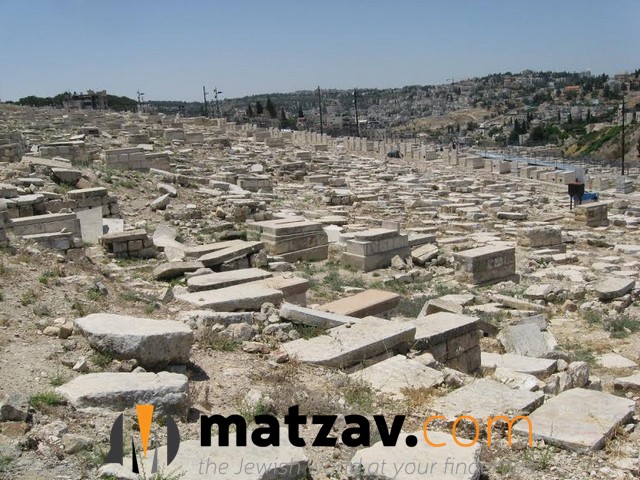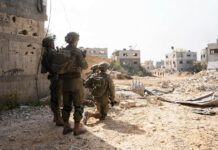
For nearly 70 years, pieces of their matzeivos lie strewn over a large area of Har Hazeisim facing Yad Avshalom in an area known as Chelkas Hachasidim – Piza – Borak. They were rabbonim, dayanim, and community leaders from various parts of the world including Eretz Yisrael, Rhodes, Sarajevo, Kushte, Turkey and the island of Krim on the Black Sea who passed away 1850-1947 and were buried on the historic mountain. But when the Jordanians took control of Har Hazeisim in 1948, their matzeivos were destroyed and used to construct roads, villages and hotels. The tombstones were often sold by the Jordanian Legion to be used for construction material.
In a program launched this month by the International Committee for the Preservation of Har Hazeisim (ICPHH), the first group of destroyed graves will be restored in the coming weeks. According to Avrohom Lubinsky, the first group of 42 graves consist of leading rabbinic figures from Eretz Yisrael and abroad whose place of burial is known but the matzeivos were destroyed. They include such luminaries as Rav Yitzchok Prague, the founder of Bais Medrash Doresh Zion, Rav Avrohom Pinso, the Chief Rabbi of Sarajevo, Rav Rafoel Nissim Bachor Halevi, a prominent rav and posek from Yerushalayim, Rav Ephraim Mirkado Elkelai, Chief Rabbi of Damascus, Rav Chaim Nachum Mizrachi, Chief Rabbi of Tzefas, Rav Meir Rabbeinu Franco, Chief Rabbi of Chevron, and Rav Yisroel Meir Mizrachi, author of the Seder Pri Haaretz and Rebbe of the Chidah.
When the IDF captured Har Hazeisim in the Six-Day War in 1967, they found that some 45,000 – 50,000 graves were destroyed. A large number are underneath the Seven Arches Hotel (formerly the intercontinental Hotel) and adjacent roads. Several thousand graves in the cemetery were immediately restored by the chevra kadishas but the vast majority were not. In the past five years, the government of Israel placed matzeivos on some 20,000 graves in the area but the government has since ended the program and has asked the ICPHH to restore the remaining 23,000 graves. Working with the chevra kadishas, the ICPHH hopes to map as much as possible the exact locations of the remains, and to place matzeivos there. More than 80% of the names are documented and a significant number mapped.
The ICPHH hopes that Jews the world over will recognize the national shame of leaving these niftarim without matzeivos. “Every day that these Jews do not have matzeivos is a national disgrace,” said Avrohom Lubinsky, founding chairman of the ICPHH. He said that while the initial effort focuses on the rabbonim, the ICPHH hopes to restore in the coming years all of the destroyed graves in the various chelkas throughout Har Hazeisim. “Every Jew can participate in this enormous zchus to help these niftorim finally rest in peace.” We are initially working with the United Sephardic Chevra Kadisha of Yerusahlayim but will ultimately expand the program to other chevras who also have large numbers of burial places without matzeivos.”
Founded in 2010, the ICPHH has been responsible for a number of security and development programs in the 3000-year old cemetery, including the installation of 136 cameras, the establishment of a police sub-station and soon to come new walls and gating in the Eastern section of the cemetery. Jews who wish to participate in the restoration of graves may visit www.harhazeisim.org .
{Matzav.com Newscenter}











